This is the country where Che Guevara and Butch Cassidy and the Sundance Kid breathed their last. Driving through those lands was a step back in time. There was little in the way of accommodation on our route, so we sought the sanctuary of a deserted church.
The owner of the property came by and said where we had parked was dangerous. He asked us to move to where he could see us from his house, so he could phone the police if we had any troubles.
Our elevation was 12,500 feet. The view was fantastic, the thunderstorm and rain was awe-inspiring, as was the drop in temperature so quick as the storm moved on that the raindrops froze in place. We set the automatic thermostat on our furnace and slept. We woke up to thick fog.
In both the city and the country you can’t help but notice the people in “traditional” dress. The mestizo and indigenous women often wear the costumes that were imposed on them by the Spanish conquerors. The costumes vary by region. The hats can be anything from bowlers to panamas to knitted tuques with earflaps. The skirts vary in length, and in some areas may be above the knees, or may be cut so that the sides and back are higher than the front. They are often worn with an apron, and are always worn with numerous snowy white lace petticoats. They are called polleras. They are made with a great deal of fabric tightly gathered at the waist and then formed into box pleats at the hips. Typically there is a horizontal fold at the hips with a braided cord of the same fabric fed through and tied in a bow at the back. The fabric can be anything; often velvet or satin, sometimes worsted wool or jacquard. These skirts are worn by ladies herding sheep and also by ladies driving vans and carrying briefcases. They are not worn by the women who work in white-collar jobs. Interestingly, we saw several women working alongside men working on construction or road building projects, wearing long polleras. (You rarely see women working in the “non-traditional” jobs in Central and South America.) The skirts make every woman look like a pyramid on little legs, but they sway and ripple alluringly.
The people in the cities are usually friendly. The people in the Andes are more reserved, often ignoring us. Even so, if we wave and smile we usually get a smile back.
On our way to the border we decided to check out Sajama National Park.
Bill’s 4x4ing skills were put to the test as we had to cross two creeks and slurp through several mud holes to visit the Sajama Geysers. The area is grass and mud and rock and the water comes out of the ground in numerous small pools. In many of the pools the water is so hot it is boiling.
We put Capi on a leash. As we were leaving, because her feet were muddy, we encouraged her to walk in the warm water on the grass beside a pool. The ground suddenly sank away beneath her like quicksand and she was flailing, sinking in hot, hot water up to her chest. She struggled, we pulled on her leash and she came free, much shaken but not burned.
Bill took a few videos. You can hear the water boiling.
The next stop was the border with Chile, at 14,500 feet. Or something. Lack of oxygen affects mental performance.

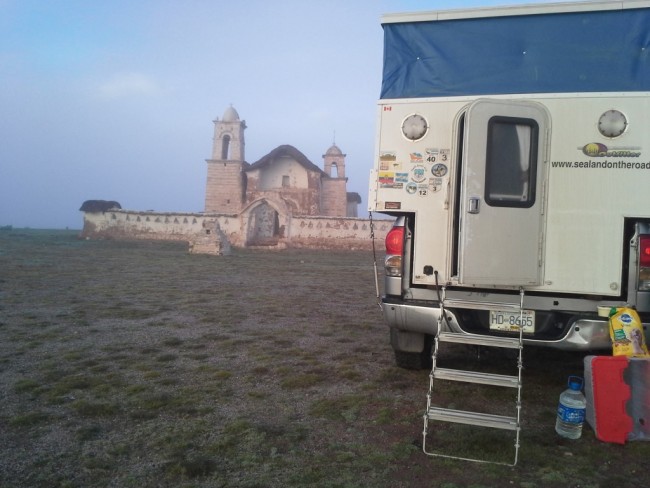
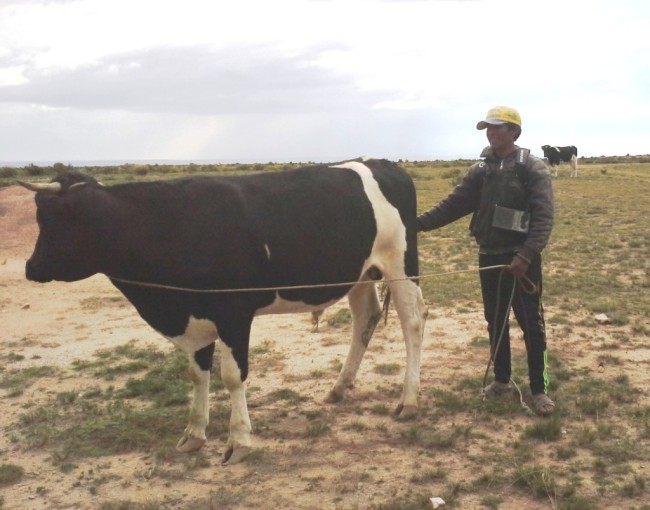
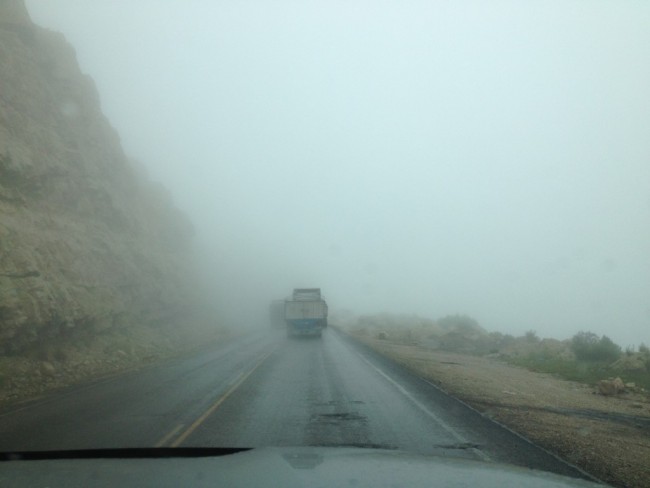

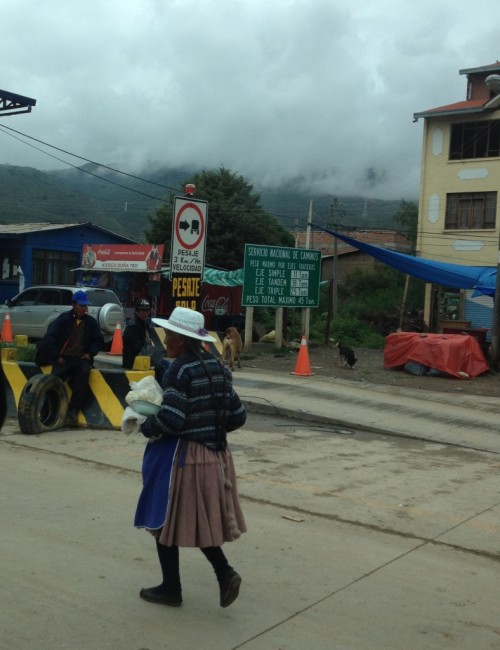
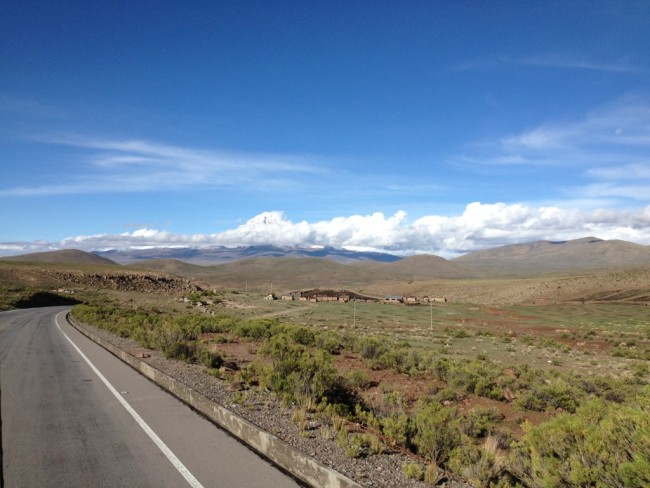
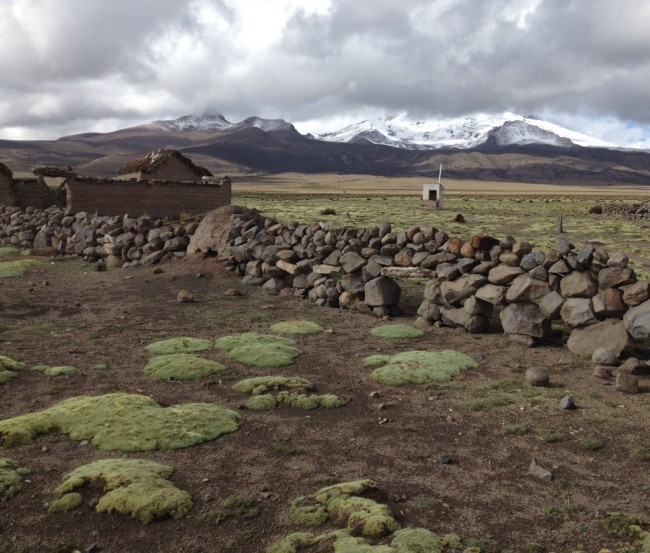
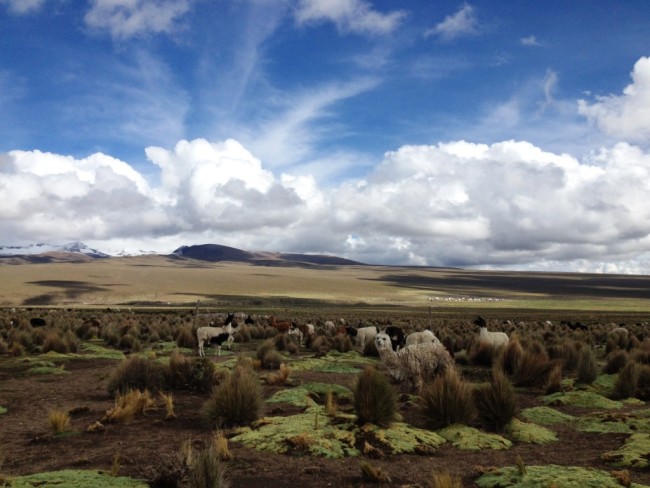
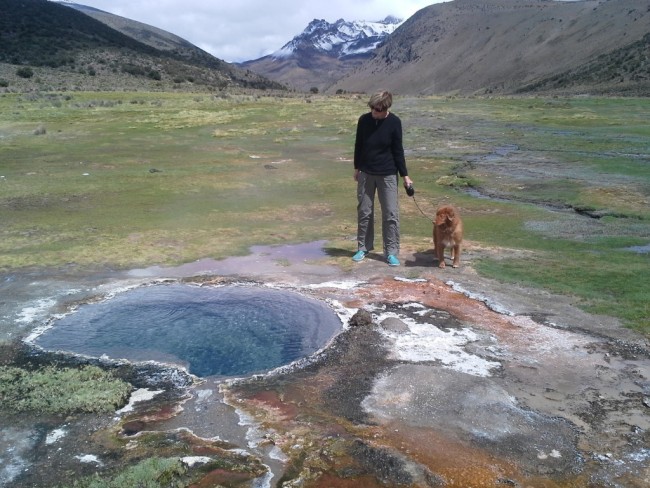
You guys look like you are having a great time. Do not take a wooden peso’s